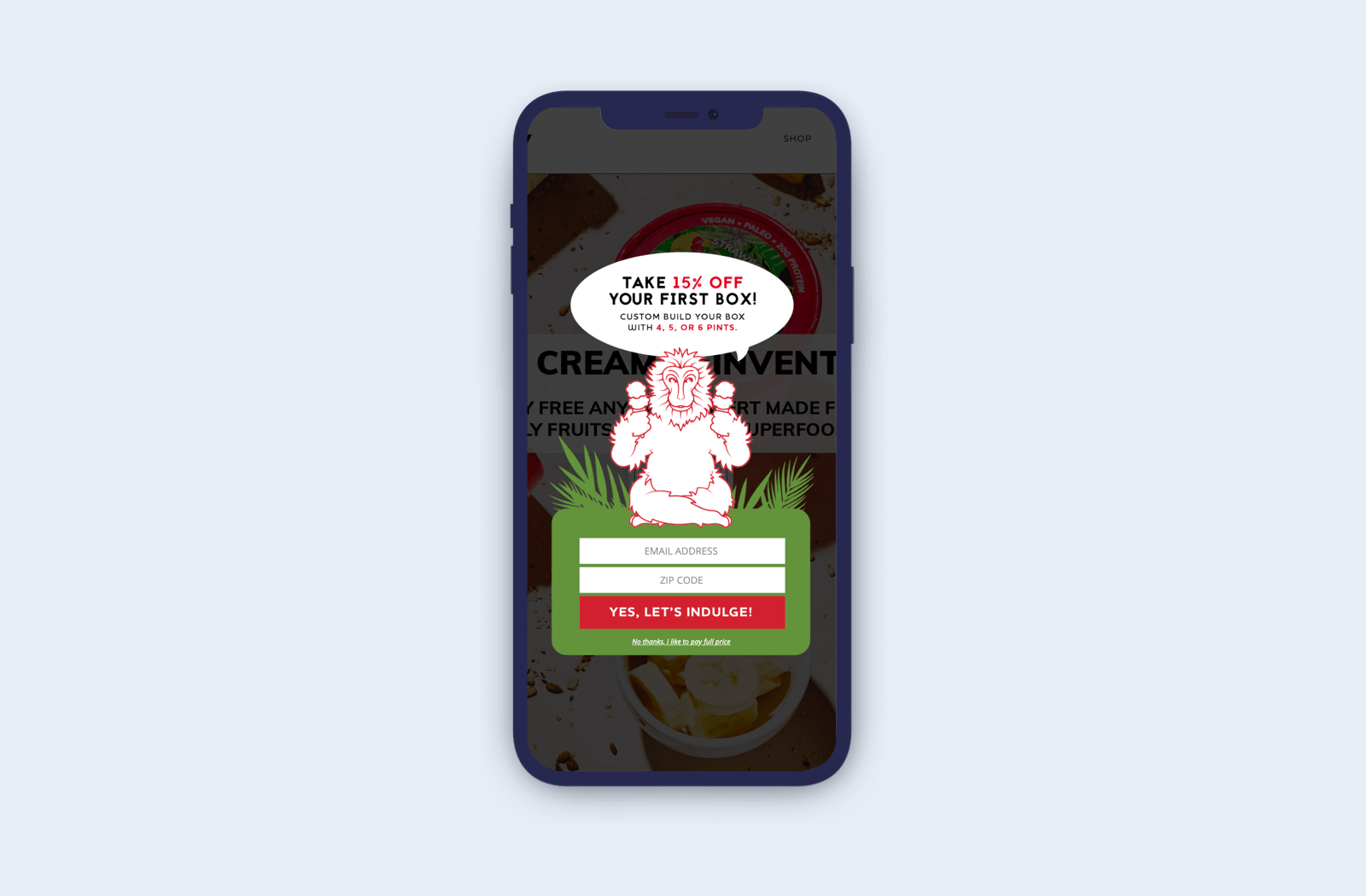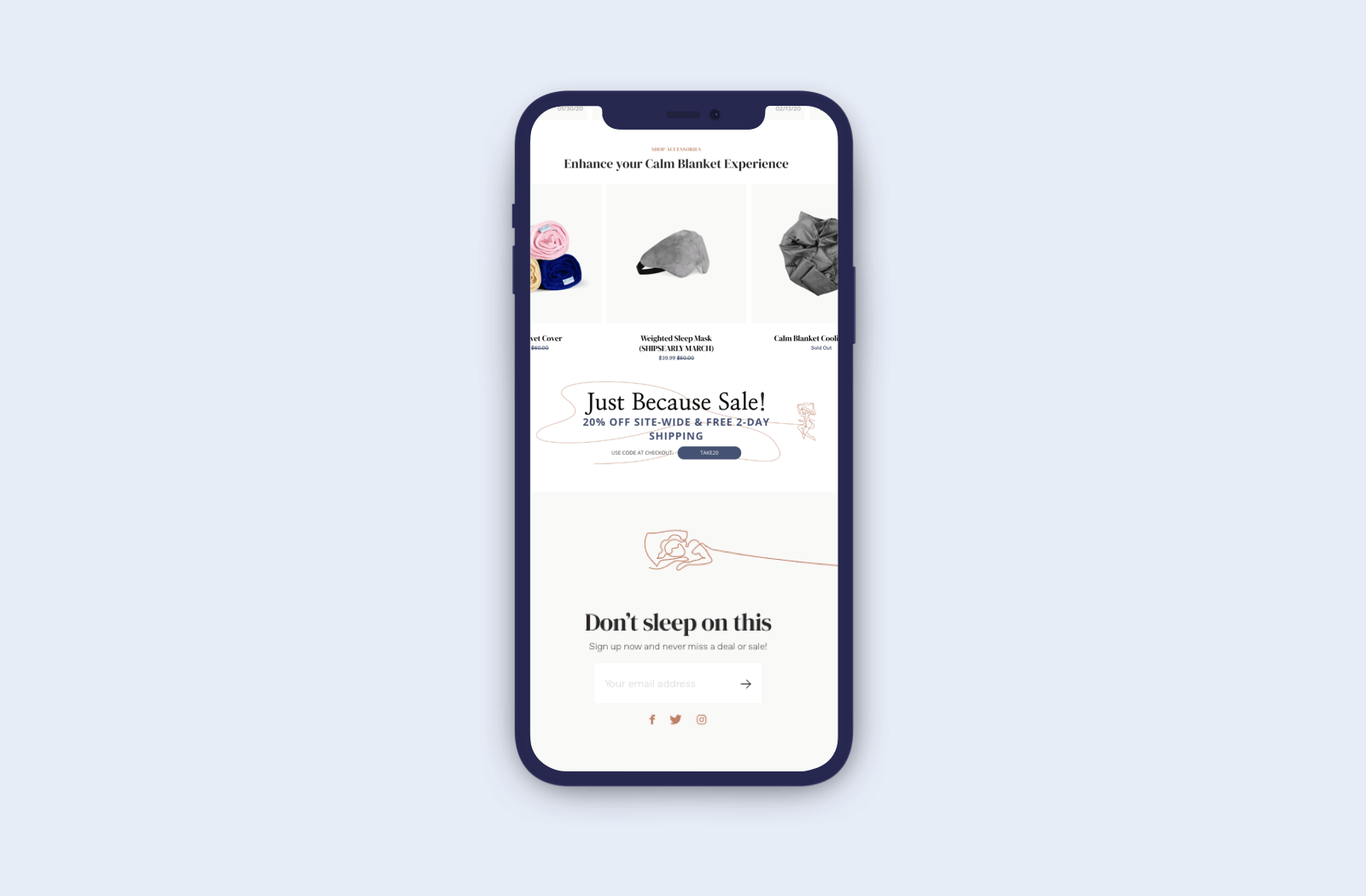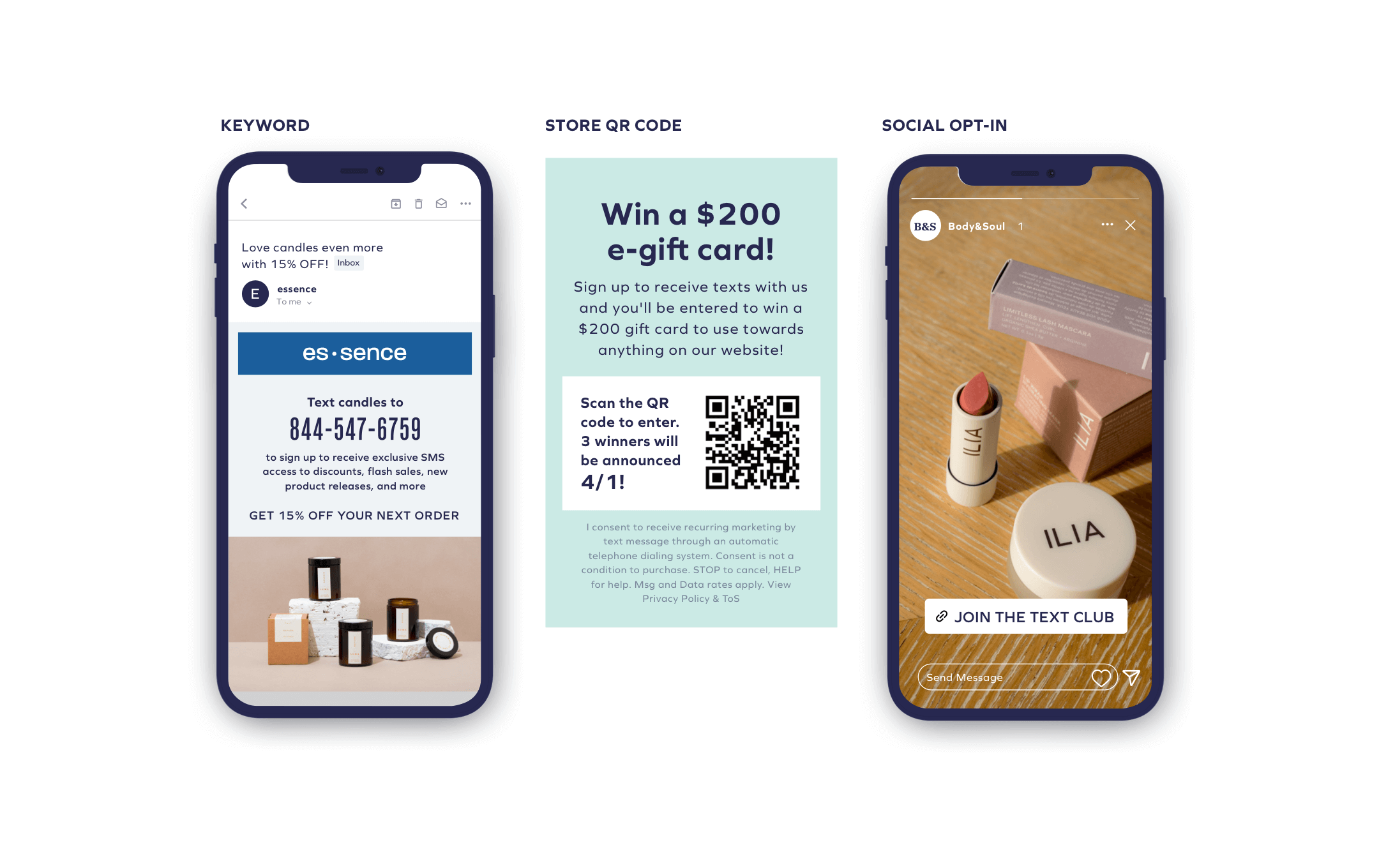But it’s not easy…you’ve got less screen space to work with, a short consumer attention span, not to mention the wide variety of potential referring sources that mobile traffic can come from versus desktop. Personalization is the key to making these moving pieces fit together, providing the right experience for each visitor at the right time. You’ll need to find the balance between interactive without effort and engaging without obstructing.
Let’s dive into some of the ways to cultivate a personalized customer experience for your mobile visitors that delights and turns them into lifelong customers.
Collect Zero-Party Data & Scale Your Subscriber Lists
Zero-party data is the new currency of the marketing world, so don’t forget it when crafting an onsite experience for mobile. The most obvious of which is the collection of email and SMS from mobile visitors. SMS collection is easier than ever via tap-to-text opt-ins, which require nothing from the visitor except two finger taps: one for the CTA, which opens a pre-populated message in their texting app, and another to send the opt-in message. Two-step opt-ins are also popular along with gamification and banners.

Take the mobile opt-in experience one step further by asking for one more piece of zero-party data: when they subscribe, offer a quiz to help identify the right products for their needs. Then, end the pop-up with a direct add-to-cart button. Finally, take this data to personalize your welcome and follow-up series for immediate customer relevance that makes them more likely to engage (and convert!).
Personalizing for Traffic Source
When it comes to mobile traffic, every channel that you’re using is a potential referral source. Ensure that you’re making the most out of each campaign when a customer clicks through from those sources. From your email and SMS to social media ads and influencer posts — use UTMs to properly target and personalize what each visitor is shown. Properly segmenting out possible funnels for returning visitors (email/SMS) vs. new visitors (social media/influencers) and the differences within each can further increase the level of personalization.
Depending on the content the consumer clicked through, you’ll want to use similar copy or creative to match what inspired them to click in the first place, like the offer from your SMS campaign. Use imagery from Instagram or other social channels to achieve a similar aesthetic. The key here is to avoid a whiplash effect — presenting your brand in the exact same manner as that which originally sparked their interest will help to prolong engagement.

In-store to Online Connection
As more and more successful D2C brands move into a blended strategy of retail and eCommerce, the ability to seamlessly tie the two together will be critical. Nearly 75% of US consumers use their phones to look for more information on the purchase they’re about to make in a store and the ability to personalize that corresponding online experience is key to conversion and, ultimately, retention.
But how can you create that personalized experience for these in-store shoppers?
Leverage QR codes. These can be included on your packaging, as part of your signage if being stocked in retailers, or something you include in the design of your own storefront. You might even consider placing a QR code where an out-of-stock item is located to appeal to the 27% of consumers that have purchased a product from their mobile device while visiting a brick-and-mortar store.
This gives the shopper exactly what they want right off the bat — funneling them directly to the checkout page and personalizing their journey to pick up right where they “left off” in the store. Not to mention the invaluable data you’re collecting to understand this segment: specific product interests, which store locations they’re frequenting, and more.
Provide an extra boost of personalization by firing an onsite message targeting traffic from these in-store QR codes using UTMs. Whether it’s on the packaging and takes them to your FAQ page, fires a pop-up offering to connect you to a live rep to answer questions, or asks them to sign up for SMS to receive instant alerts when new products hit the shelves in their area — the possibilities are endless for how QR codes can be used to personalize the mobile consumer’s experience for maximum results.

A great example of a QR code strategy is HDMH, a baseball brand that hosted summer clinics with MLB pitch & founder Marcus Stroman. They placed QR codes at merch tents where attendees could scan it for 20% off, which then triggered a pop-up offering their discount upon subscription. This not only allowed HDMH to provide attendees with a discount to encourage purchases, but also gave their team a chance to collect contact information so that they could continue the conversation, turning new customers into repeat ones. HDMH collected 225 new email subscribers and drove $2,000+ in online revenue from this campaign alone.
“Click to mortar” incentives align the store experience with mobile shopping and aren’t limited to QR codes. You can also create geo-targeted pop-ups on your site showing special incentives to drive foot traffic (Get 20% off today only by showing us this banner) or attendance to live events in the area.
Combine onsite experiences like these with similarly geo-targeted SMS or email campaigns to let customers know about local inventory launches or even activate loyalty program members.
Browse/Cart Abandonment Opportunities
Mobile visitors are far more likely to abandon their cart, at 86% versus 69% on desktop. It’s crucial then to have a personalized flow set up to either keep them on site or bring them back if they do leave. Exit offers on mobile are typically triggered via the back button or simply by idleness; set up exit offers for key segments like new visitors who opted in or new visitors who did not opt-in, each with a personalized message based on their current journey stage. Your cart abandonment notifications should be set up to reference specifically what is in that customer’s mobile cart at the moment, along with an incentive to convert the same session based on their previous onsite behaviors.
If the visitor still exits, use automated email and SMS flows that complement one another, targeting these segments. Use SMS for more high-urgency activation (Buy now, 24-hour flash sale on your cart contents) and leverage email for more long-tail nurture content. Then when the shopper clicks through, make sure to mirror on your mobile site any key information they’ll need to finish their purchase (an exclusive coupon code, countdown timer, or just a reminder of what they left behind).
Post-Purchase Personalization
Once a mobile visitor has checked out, there’s a whole new area of opportunity to continue engaging them and collecting data for future personalization. For mobile, this is a great time to collect SMS opt-ins from those you haven’t already, Instagram/TikTok handles, and more. These additional channel opt-ins help cement your relationships with your customers and provide more information for future personalization opportunities.
Final Thoughts
It’s time to do away with the old school of thought that mobile is simply a channel for top-of-funnel activities like discovery and research. The new school marketer understands that the whole funnel takes place on mobile, grown out of a see-it-click-it-buy-it mentality, and that needs to be reflected in your onsite experiences.
Interested in building a personalized mobile onsite experience? Try out Justuno free for 14-days to see just how much in mobile sales you’re leaving on the table.
About Justuno
Justuno is the premiere onsite conversion optimization platform with personalized messaging, AI-powered product recommendations, and advanced visitor intelligence technology to help businesses turn visitors into customers. Justuno empowers brands and agencies alike to create better website experiences through personalized touchpoints, comprehensive analytics, and more. www.justuno.com



















 Join a free demo, personalized to fit your needs
Join a free demo, personalized to fit your needs